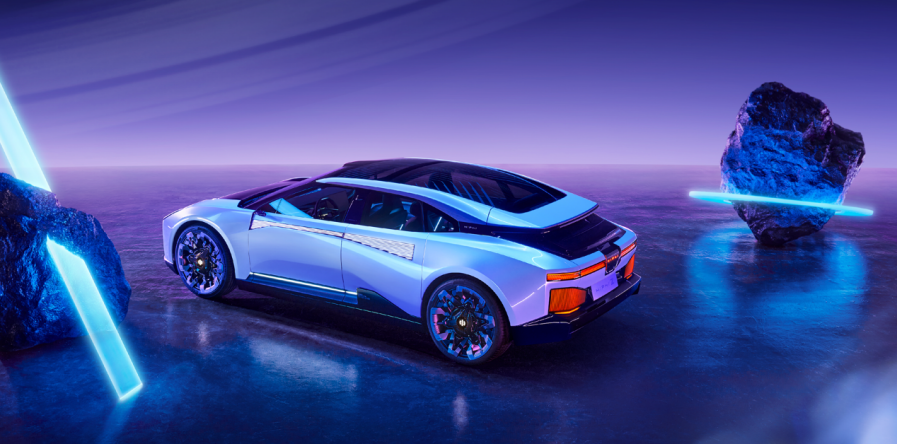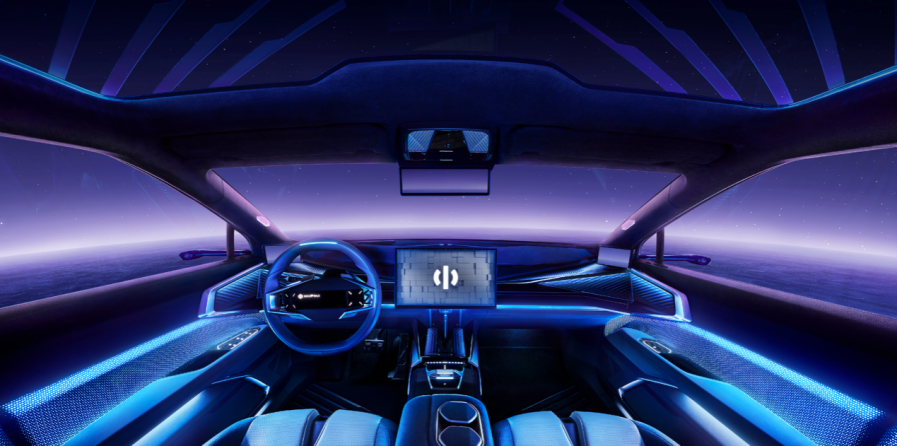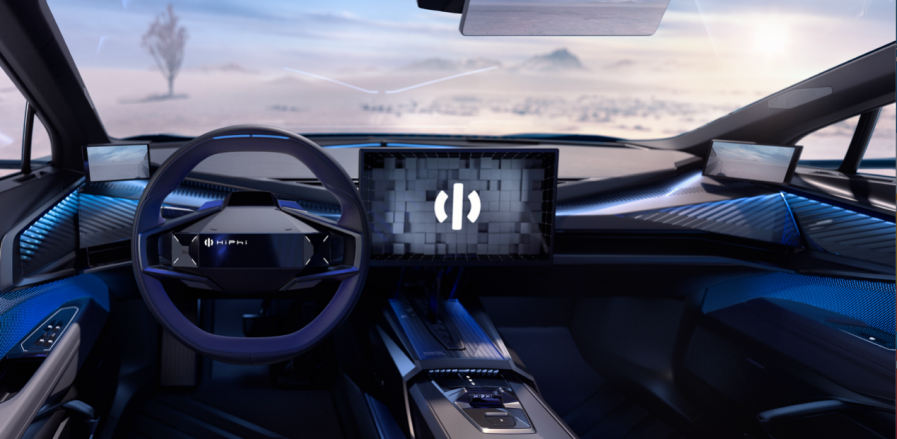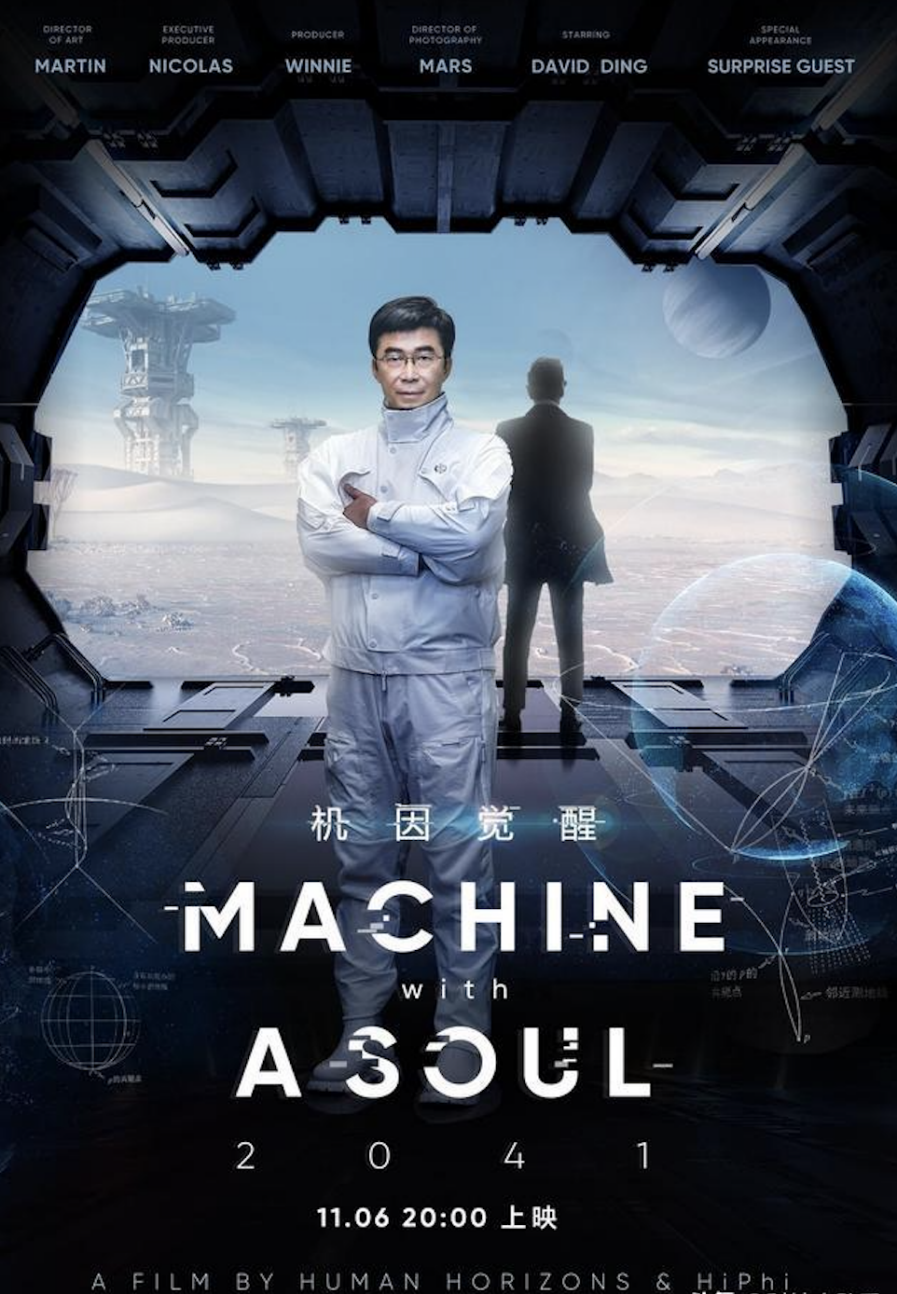This article is reproduced from the autocarweekly WeChat public account.
Author: Joey
Last week, GaN played a “trick” and completely bewildered me with terms like “2041”, “Machine with a soul”, and “special theory of relativity”.

A carmaker using these impressive phrases on a brand-new car made me feel that this car is definitely extraordinary. Of course, this also fits the identity of Ding Lei, the founder of GaN and a “non-typical physicist”. After all, a car maker who studied nuclear physics should pull out all the stops in terms of profundity and height.
However, depth and height are not enough to describe the new car released at this press conference. This time, after GaN HiPhi X, GaN named the second car HiPhi Z. GaN said that this name comes from the interpretation of four-dimensional space, which is to break through the current space-time barrier and bring the “car of the future” to today.
GaN has high expectations for this car. Firstly, they share the flagship title that HiPhi X has with HiPhi Z, which is to create a “double flagship” product strategy. At the same time, it is positioned as a GT model, and not just an ordinary performance GT, but a digital GT.
So, after reading so many prefixes, you must be like me before, wanting to know what kind of car this flagship, this digital GT, is?
Technology injected with life, what can it become?
If you were to ask me what my deepest impression of GaN HiPhi X was, it must be its lights and doors. Whether it is the ISD headlamp group that can transmit information, the front and rear double-opening seagull doors, or the upward-opening gull-wing doors, they can bring out the sense of technology that GaN insists on. And this time, the sense of technology has been upgraded once again.

This time, GaN covered the ISD headlamp group on the body and formed an ISD light curtain system, which fully enhances the science fiction atmosphere inside and outside the car. If you don’t understand what I mean by “colorful,” you can think of the RGB desktops that digital enthusiasts create for themselves.In my opinion, if in the past someone might buy a Mercedes-Benz for its ambient lighting, then in the future, GAC’s offering might bring more options for customers. At the same time, the six doors of the HiPhi X have been simplified to a design featuring a pair of doors, complemented by an active air intake grille, suspended tail wings, and 22-inch wheels, making HiPhi Z a “digital exoskeleton” designed by GAC.

Clearly, these design elements replete with a digital technology feel are very attractive to a tech enthusiast. However, if this is GAC’s or Ding Lei’s understanding and interpretation of technology, it clearly cannot meet the expectations of most people. Therefore, HiPhi Bot seems to be the core innovation point of this digital GT.
Before the HiPhi X was launched, GAC had already announced a cooperation with Microsoft to transplant Microsoft’s artificial intelligence system “Xiaoice”, which was intended to shake up Siri, into the car. This time, HiPhi Bot has given it thorough anthropomorphization.

Speaking of this, you might think of NIO’s NOMI Mate, a personalized car interface system. In fact, HiPhi Bot seems to be following this direction. However, interacting with a screen is obviously more conducive to achieving a feeling of science fiction than an externalized cartoon avatar.
A multidimensional sensing system and mechanical components that enable displacement and rotation, always automatically matching your position and posture, make the screen easier to evoke the “Lucy” character omnipresent and knowledgeable in the animated series “Psycho-Pass”. More importantly, this Lucy will also be developed and rendered in 3D by the Unreal Engine in Epic Games (that would be fantastic if it’s Unreal Engine 5!).

Now, I believe, like me, you also have high expectations for HiPhi Bot, which combines ISD lighting effects, Microsoft’s intelligent technology, and Epic’s Unreal Engine. The aura must be fully charged. What we need to know now is what kind of human-machine interaction can be achieved with Lucy on the mass-produced version, 20 years later.
But, to build a car company, profit must come first. Selling flagships for everything, but not selling in large quantities, isn’t feasible, is it?
“Unconventional” physicists may have “unconventional” goals to achieve.Undoubtedly, any brand strategy of an automaker must first establish its brand with high-end products, then use mass-produced models to increase sales, and ultimately achieve profitability. This can be seen from NIO’s product strategy.
When NIO first launched its products, it introduced the flagship model ES8. After the market began to recognize and accept the product and brand positioning (including services), lower-priced ES6, EC6, and even the soon-to-be-launched ET7 were introduced to lower prices and achieve the company’s financial balance (although it is currently still losing money, its market value is huge and profitability should be a matter of time). However, GAC seems to have not chosen this route.
Obviously, such a cool and futuristic product as the HiPhi Z cannot be cheap (the HiPhi X costs more than RMB 500,000 to RMB 800,000). Therefore, what is GAC trying to achieve with this unconventional product strategy?
If you still remember Tesla’s brand strategy when Musk started it, you may be able to understand what GAC is currently doing. At the beginning, Tesla introduced an electric convertible sports car (Tesla Roadster), which did not receive much attention, but Musk persisted in producing better electric cars with high-end positioning. Therefore, later we saw the Tesla Model S with a price tag of millions.
However, after the Model S successfully established Tesla’s name, Tesla still did not choose to produce mass-produced models. The Model X was the next model to come out. Obviously, for Musk and Tesla, high-quality products and high-end positioning are essential to make people accept pure electric cars that are completely different from the era of internal combustion engines. And one product seems to be not enough to deeply embed this concept and recognition in consumers’ minds.
GAC is the same. Since its official delivery this year, the GAC HiPhi X has achieved very good results in the electric car market at a price level of over RMB 500,000, and in September even surpassed Porsche’s Taycan, climbing to the top of the rankings with outstanding achievements.For Geely’s owned brand – Geometry, which is still relatively young compared to others despite being created by Geely’s chairman Li Shufu and his team, there is only one model available: a niche high-end electric vehicle that cannot achieve the same volume as other mid- to low-end models, and the brand recognition still needs to be further deepened. Therefore, based on this foundation, launching a product that is completely different from the previous model’s positioning, but with equally luxurious technological attributes, is obviously the most appropriate and adventurous choice, just like Tesla’s Model X when it was first introduced.
After all, for Geometry and even for Geely, the initial “smart car, smart road, smart city” triple-smart strategy aimed at leading the future direction of intelligent driving; to exploring the future of automotive intelligence, technology, and even endowing vehicles with life. In the process of exploring new market opportunities and customer preferences, Geely’s Chairman Li Shufu and his company have implemented a complete logic and a clear playbook for product design. They only bring out the “future” products that the brand believes are the best and can bring users a sense of freshness and quality. This is indeed commendable.
However, such a brand operation concept and product design strategy that adheres to the minority and idealistic route may cause considerable turbulence in this profit-oriented market. How will it affect other brands?
In fact, at the beginning of the era of pure electric vehicles, Chinese auto brands, regardless of their old or new forces, seemed to see the possibility of overtaking on a curve. However, from the current overall pattern of pure electric vehicles, seemingly everyone knows that there is a clear goal, but the routes taken are different. This especially makes sense when the relative lack of products (especially the new forces coming from scratch) is considered. Product development and manufacturing require time, pushing to the market requires time, being recognized and accepted requires time, and even whether it can sell well ultimately requires time. In this process, any deviation from the correct path can potentially lead to failure.
At the same time, no matter which era it is, the bottom line of auto manufacturing is the core driving force for companies to accelerate progress. Therefore, we see European auto brands making a comeback, and American auto brands also beginning to accelerate their efforts.In such an environment, despite the booming trend of new energy vehicles in China’s market, neither the new forces that are still in the early stage of technological innovation nor the traditional car companies that aim to occupy the market with as many new energy vehicles as possible have formed their final core competitiveness (excluding customer service). Therefore, the only common point between China’s electric car sales chart and Europe’s sales chart is Tesla, because no matter when, Musk will try his best to produce products with the most forward-looking technology under his own concept framework. Although it is currently difficult to determine whether this direction is correct, he has indeed created products with his own unique characteristics and soul, which is clearly the reason why more people love Tesla.
As for GAC’s HiPhi X, at least from the first car, it has established its own brand positioning through sales (although the sales volume is not large for the price range it is in), but obviously Ding Lei wants more. Because with years of experience in the automotive industry, Ding Lei is aware that if there is no advantage in brand and product, he must have his own core competitiveness. And in the age of intelligent pure electric, such core competitiveness must have its own characteristics. The development of organic silicon seat materials in partnership with Dow, and the idea of creating a technology luxury brand, the partnership with Microsoft to develop an intelligent system that creates better human-computer interaction scenes, and even the introduction of the Unreal Engine, which is required for 3A-level games, into 3D rendering of cars, creating a full sense of technology in the car is all for this.
The ultimate goal of these partnerships is to let more people see, touch, and use the high-tech experiences that HiPhi believes come from the future. And once consumers really recognize and accept the core product strength of the product, it is the time when HiPhi truly welcomes a product outbreak and a surge in sales.
For many other manufacturers, it may be difficult to establish their own system from the beginning because they pursue reports and sales numbers. Even if they are successfully established, it is difficult to stick to the execution process and insist on realizing it without being influenced by any factors. Obviously, Ding Lei is doing such a thing.“`markdown
After all, it is still too early to judge whether going down this road will be successful for Ding Lei, Huaren Yuntong, and Gaohe. (After all, HiPhi Z will not be mass produced and delivered until 2022.) However, at least he has started and it seems to be going smoothly. For this alone, it deserves a thumbs up.

After all, it is already difficult to make a choice, and it is even more difficult to stick to it.
“`
This article is a translation by ChatGPT of a Chinese report from 42HOW. If you have any questions about it, please email bd@42how.com.
